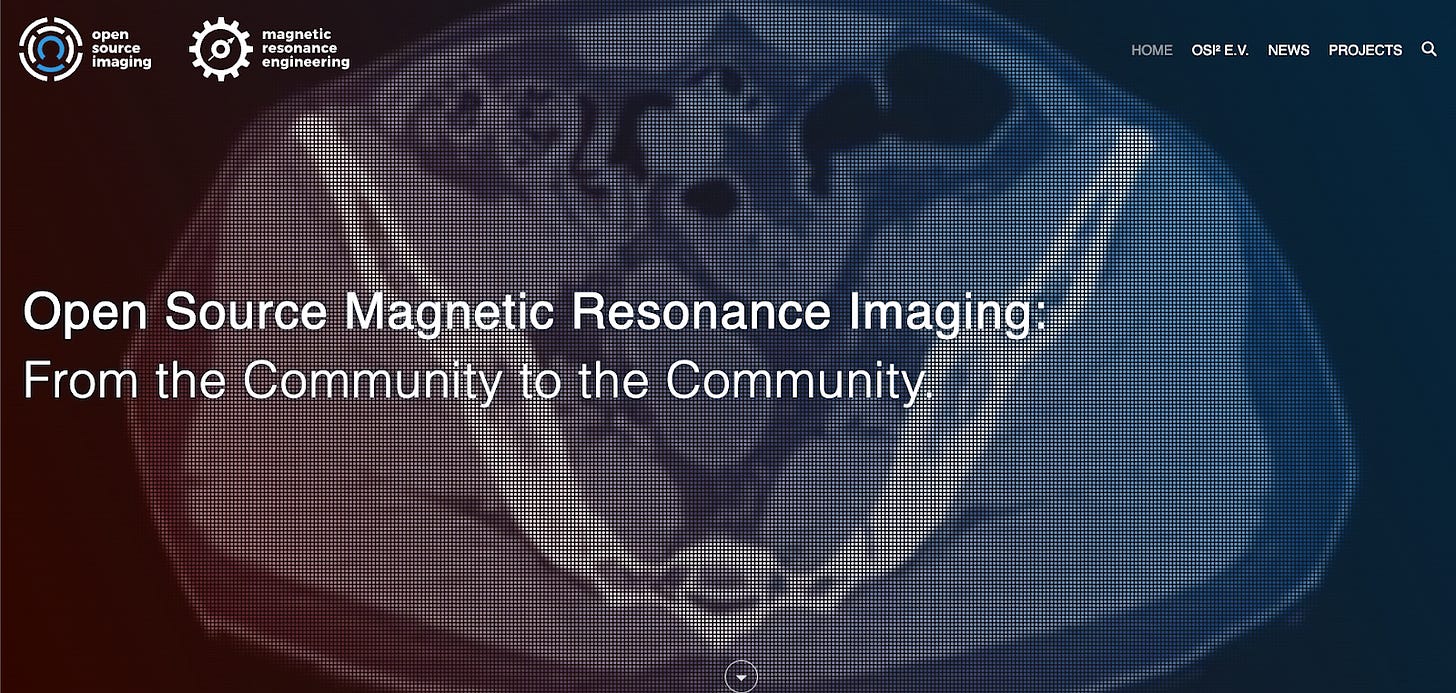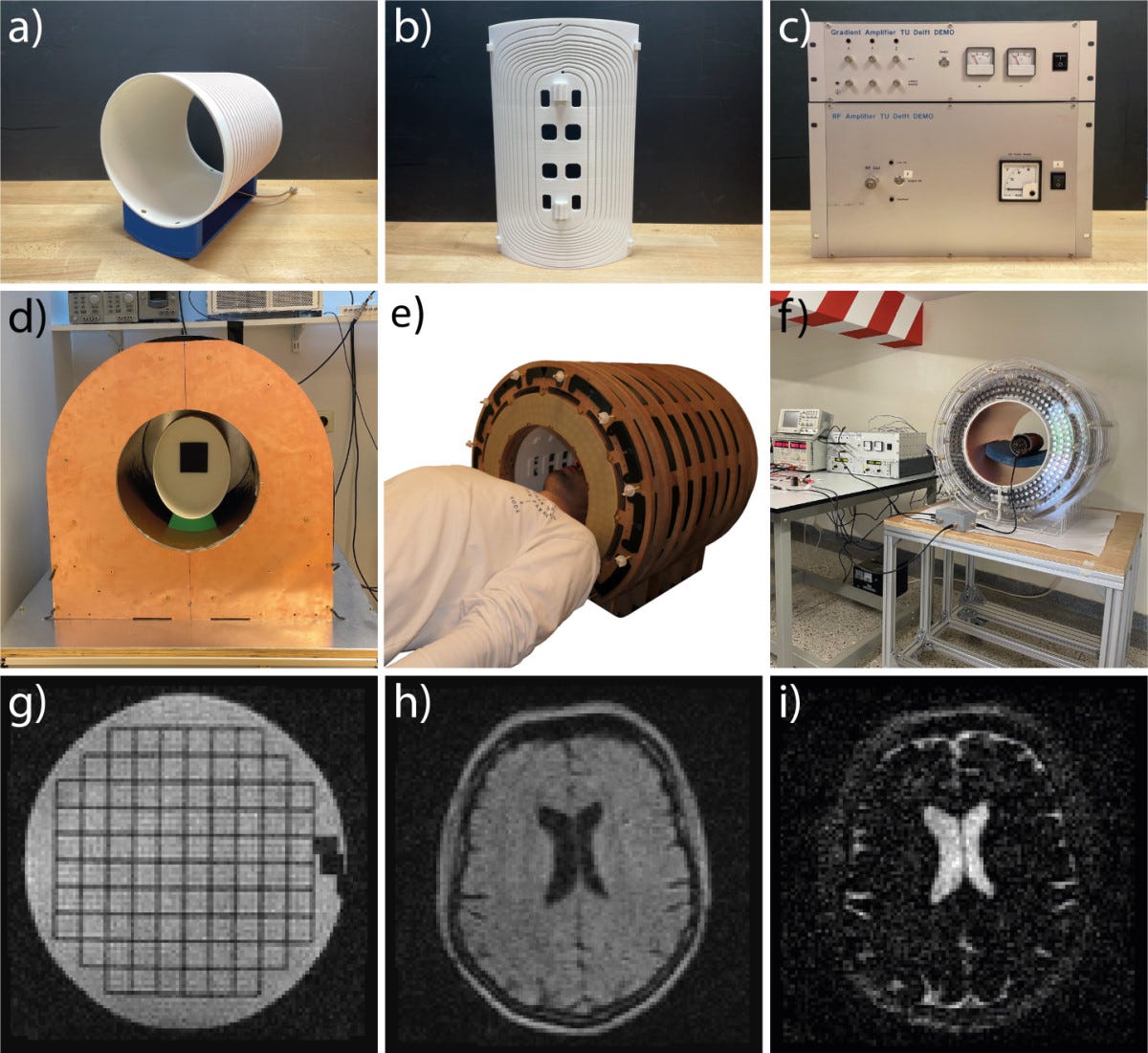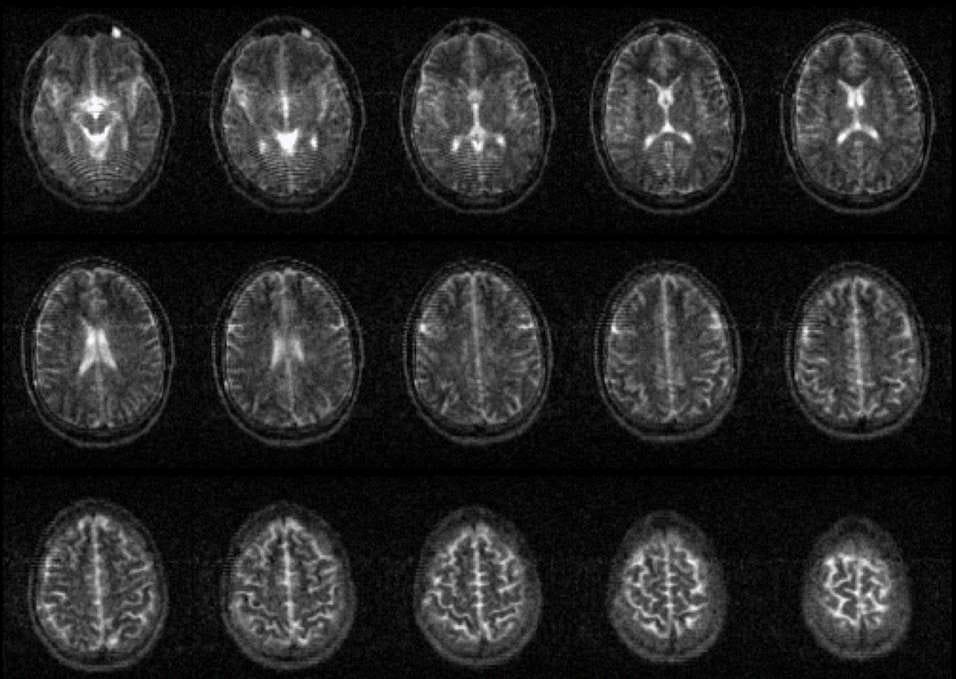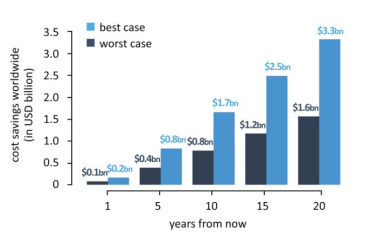The radical power of Open source MedTech: The community creating affordable healthcare.
👋 Hey, it’s Jaime. Welcome to my weekly newsletter where I share how thriving open source projects grow their communities.
Subscribe to get access to these and all future posts.
Today I’m going to show you exactly how the Open Source Imaging Initiative (OSI²) found a way to dramatically lower costs with the goal of making health care available to people worldwide.
You’ve probably never heard of them, but it’s a project that could inspire serious change in how the medical field develops its tools, and could save us collectively billions of euros in healthcare by taking the price of MRIs from over 1.5 million euros to below 50.000 euros. Not to mention annual maintenance costs.
We’ll cover:
How did the OSI² project get started?
What becomes possible with cheaper and open MRIs that’s impossible with closed systems?
4 ways to make a healthcare device cost 10X to 100X less
How big does a community need to be to be this impactful?
How does one scale the quality of life-critical production of an open source medical device when anyone can make it?
How can you replicate some of OSI²’s successes?
Whether you’re a researcher or an innovator who wants to improve an industry taken over by very few actors who control an industry, you can take inspiration from their strategy.
If this is not you, feel free to skip it; next week I’ll come with more content you should be interested in.
Read time: 15-ish minutes
OSI² develops medical imaging prototypes and aims to make modern instruments accessible worldwide. The project pools the knowledge and experience of many experts to develop open source designs for Magnetic Resonance Imaging devices (MRI) which can be built and maintained for a fraction of the price of current instruments.
If you don’t know much about MRIs (I didn’t), medical imaging is crucial to diagnose many diseases. MRI is currently the most powerful diagnostic imaging tool in medicine because it provides a detailed view of internal tissues without invasive procedures and without ionizing radiation.
The problem is that globally, MRI is a scarce commodity. Its cost and complexity limit its availability mainly to industrialised countries and larger hospitals.
That’s why the collective aims to develop medical-imaging devices that are affordable to build, operate, maintain and repair by providing full, open source documentation to dramatically lower costs and make health care available everywhere.
The beginnings
OSI² got started by Lukas Winter, Board Member of OSI²eV (the newly founded non-profit body of OSI²), and more researchers out of two big frustrations:
the lack of transparency in the medical field to reproduce research results, evaluate and improve the existing equipment
these very expensive imaging devices are not available for the majority of researchers and patients globally
One could think the main obstacles to overcome these problems in medical projects and many other projects, are the financial or technological or political hurdles (we’ll get to how to figure them out below). But Lukas Winter thinks the main obstacle to focus on first is on ones ego.
“If you ask yourself: How can I improve the world or society? The emphasis in this question and reflection should be on the "improve the world" and not on the "I improve". None of us is free of ego, but if you consciously focus on the bigger picture it ultimately influences your daily small decisions and leads you to an open source collaborative approach. Unfortunately, more often than not, the I is in the focus, which leads to great ideas that only have a short-term impact and are not implemented to their full potential.”
So from this mindset of improving society for the long term, with other scientists, lawyers, and supporters who wanted to improve healthcare, they got started with the naive question, “How can we change it?”
This became their compass and led them to figure out what would have the biggest impact to bring down the price of the most expensive parts and why there were only very few players (Siemens, General Electric, and Phillips) with an exceptionally large market share.
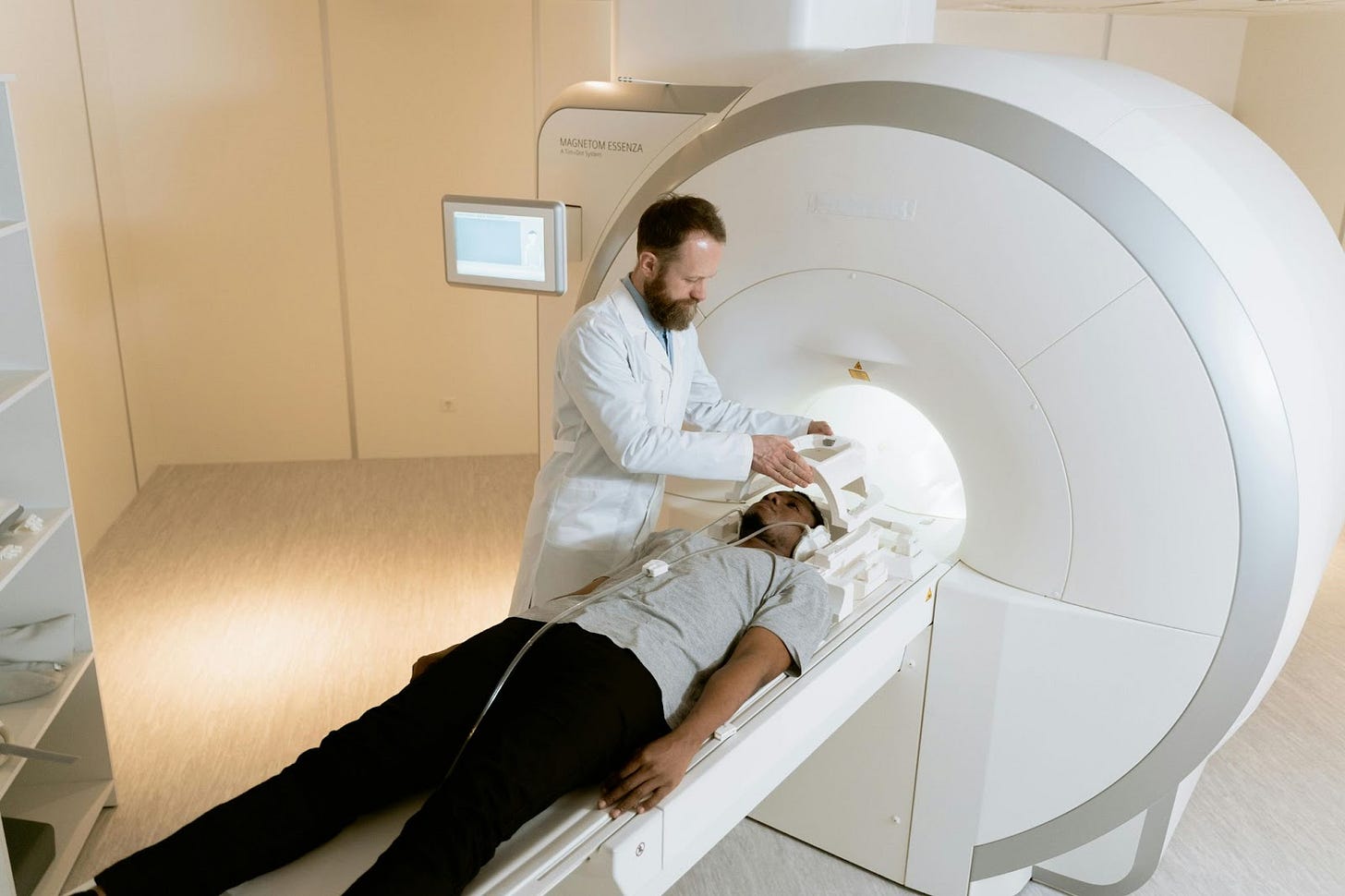
One of the main reasons for their woes was that there were no blueprints or documentation and that certain parts were unnecessarily expensive.
The next obvious step became targeting these parts first on their way to building more affordable medical tech.
So with a friend of his, Lukas started preparing a website to share their vision and signal to other researchers that this project was serious and professional and that it would still be up and running 3-4 years later.
They then went to an international scientific event, the International Society for Magnetic Resonance in Medicine (ISMRM), and submitted an abstract for an open source MRI.
This abstract attracted overwhelming interest and feedback from graduate students, postdocs, professors, and industry employees alike, who all recognised the need for affordable open source MRI devices to close the gap in available health care and reach a wider population worldwide.
That was enough to get the initial community up and running, to create continuous interest in the topic, and to motivate researchers to develop tools for the MRI project and share their designs, code, and data open source.
This led also to the first open source scanner popping up at the Leiden University Medical Center (LUMC) in the Netherlands, mainly developed by Tom O’Reilly and Andrew Webb. They then went to Uganda to replicate the design to validate the possibility of building it in any kind of environment. This replication was soon followed with new iterations to make the design simpler to avoid depending on special tools or materials that were not there and privilege cheap and readily available alternatives. Other open source scanners assembled in hackathons, such as the MRI4All system in New York and the ezyMRI in Singapore, or a collaboration between the sustainable MRI lab in Paraguay with NIST on a smaller educational scanner, are demonstrating the growing diversity of the open source MR community.
And their long-term vision doesn’t stop there. They’re called Open Source Imaging and not Open Source MRI because they want to include other imaging devices like ultrasound or computed tomography (CT).
But how did they manage to lower the costs of a complex MRI machine? How did they rally a community to collaborate? And what becomes possible once there is an affordable and open alternative medical device?
Let’s dive in!
What becomes possible with cheaper and open MRIs that’s impossible with closed systems?
Most of us don’t care about whether the devices our hospitals use are open or protected by patents. But we should care because the difference is massive.
Creating open MRIs enables lots of different technical but also social possibilities.
At the risk of sounding obvious, the first benefit is fair accessibility, because it's cheaper.
Looking at WHO statistics, at the moment, there are over 100 MRI scanners in Berlin for 3.5 million people, but about 4 in Senegal for 18 million people, which sounds kind of ridiculous. Cheaper scanners might balance these numbers and provide more accessibility to critical diagnostics for humans but also other living beings, such as in veterinary medicine.
But it can also be applied in industrial applications where current MRIs are just too expensive.
For the moment the project is focused on medical applications, but it could in theory be used elsewhere, like scanning avocados to see how ripe they are, or for the Jewish community, who cannot eat fertilised eggs, those could be scanned in the production chain to see if they're fertilised.
The second thing that becomes possible with open source low-field MRIs is that they can be designed as mobile systems that can run on battery, which lowers the constraints for their use.
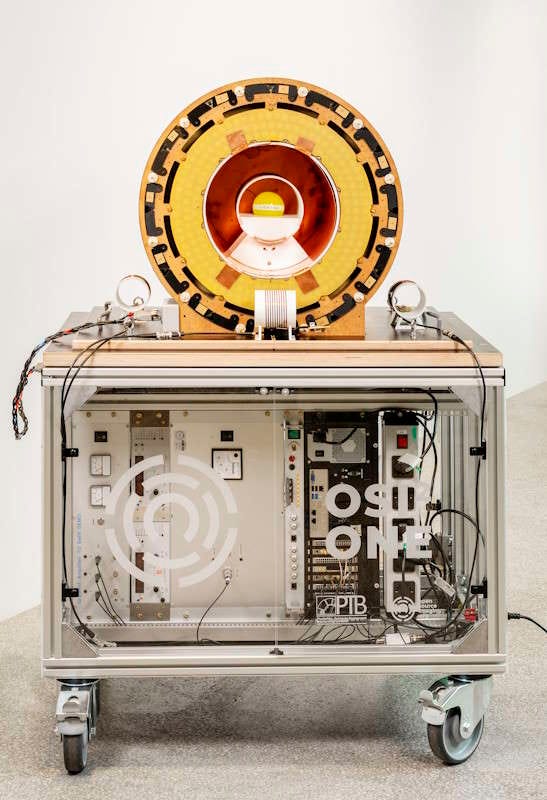
When using fixed scanners, you need an entire infrastructure that needs a very stable electrical supply and a lot of electrical power, helium, experts around those special rooms, and so on.
Since OSI²’s machines don't need all of that for the small system, it can be transported to patients in medically isolated areas for remote diagnoses. You could take an MRI to a village where people can have a scan and transmit the data to a larger city where doctors can analyse the data.
There are many more benefits beyond affordability that can be achieved through open source hardware, but to make it lighter, here’s a handy summary:
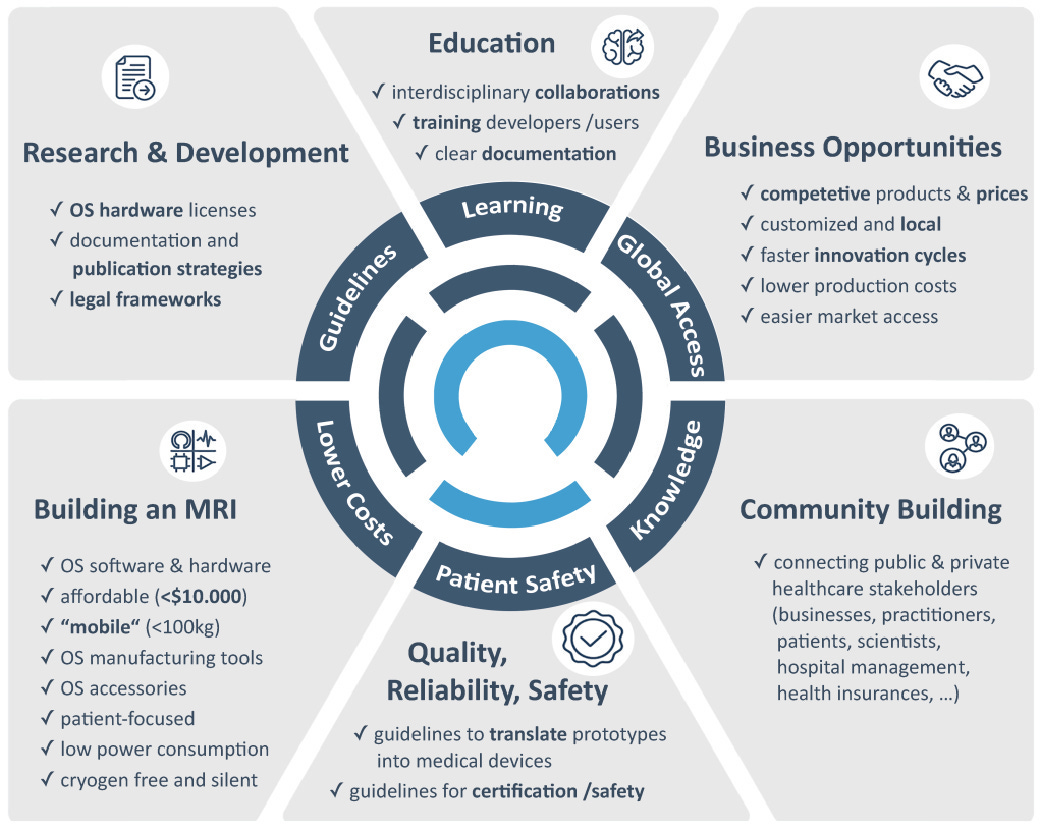
How did they find funding to challenge the “proprietary way” of developing medical technology without patents?
The first way is to sidestep as much as possible the need for funding. OSI²’s members or its supporters work entirely on a voluntary basis with the main motivation of developing open source pieces that can be assembled or used for a full MRI machine.
But everything can’t be covered by volunteering.
Some minor funding from foundations helped fund the website’s design and outreach in the initial phase.
And a great source of funding has been to align and mutualise the research already going on everywhere. While Iindividual researchers work on their public research grants, the OSI² ecosystem synchronises these individual efforts towards dedicated machines. So, for example, when research funding comes in to develop scanner modules, it helps follow-up projects and funding to build upon the available open source results instead of duplicating the same work and costs in different places.
By sharing open source designs, code, and data by various completely independent projects, a large knowledge pool is created that helps develop dedicated MRI machines, which is also useful for other technologies. So public funding is a very potent and natural funding source when the results are made publicly available.
To further scale these efforts, in 2024 the community founded the German non-profit body OSI²eV to have an official organisation representing the community and manage resources and infrastructure through an independent body—which also opens up more revenue channels.
This non-profit is a considerable step aiming to connect the growing community of researchers with the increased interest coming from the industry, regulators, and doctors. This should enable the collective to not stop at research prototypes but to develop safe and certified products that can be used to scan patients.
Here, efforts like the A4IM project, target regulatory documentation, e.g., risk analysis, intended use, etc. This serves as a publicly available documentation blueprint to help manufacturers transition these technologies into medical products.
This reduces the hurdle for market entry by saving costs, accelerating the time to market, and increasing the quality and safety of the devices.
OSI²eV can act as an official body driving these efforts with the financial and/or personal support from individuals, institutions, and companies.
In parallel, they’re going for funding from foundations and public grants as well as donations from individuals and companies to employ researchers and students to work on new developments or distribute more open-source MRI scanners to low-resource settings.
But what’s equally interesting is how they are bypassing the need to raise lots of funds by involving the community in the development.
Let’s see.
How to make a machine that costs 10X to 100X less than what’s on the market
MRIs run into four kinds of costs: the scanner itself, the maintenance, the staffing, the certification, and “everything else," including power.
OSI² could address these MRI affordability issues in four ways:
Reducing scanner hardware costs by outsourcing research and development to the community, making appropriate design decisions for low-cost replication, and opening the market for an ecosystem of manufacturers.
Reducing maintenance costs by transparent documentation.
Reducing staffing by reducing complexity and improving open documentation and education for the systems used.
By providing documentation blueprints that can be used as a basis for regulatory approval as a medical device.
And solving “everything else” by innovation and downscaling, which the vast knowledge of the research and maker community should be able to take care of!
But what does this look like in practice? There are three main drivers to create very low-cost medical devices:
1/ Finding ways around using exotic and expensive components.
The big jump from 1.5 million euros down to 20,000 euros in materials was technology. OSI² doesn't use superconductors, helium, or other exotic or scarce materials.
Even if they have a smaller size than the larger systems and have more noise in their imaging because of the lack of bigger magnets, OSI² manages to get good quality images, as you can see below, but more improvements are expected in the near future with new correcting techniques that use AI to further denoise the images and enhance their quality.
2/ Being open source and not having investors.
By developing an open source culture, OSI² must prioritise the community, technology, and the long-term impact it creates over maximising short-term profits, since this is the main motivation for the community to join and sustainably develop this vision.
This culture allows OSI² to counteract the main challenges to transitioning the prototypes results into products that can be applied on patients through industrial partners. In the medical domain, it’s often required to develop proprietary IP to attract investors for complex machinery like MRI. But with open knowledge and public IP, products based on the open source design require substantially lower investments, which allows a strategy that can focus more on healthcare outcomes rather than driving profits.
3/ Community.
To put into perspective what the community brings to the table, it’s important to imagine everything a traditional MRI startup without a community would need to do and typically pay for:
Certifying the product
Creating the production facilities
Providing the service and product support
Creating the product and the machine’s industrial design
But as the open source community is made up of members from various organisations and expertise, by gearing their knowledge towards developing a common device, OSI² can provide solutions to many of the above practically for free.
This allows the project to limit its costs dramatically, but in return, they’re giving everything that people contribute to the project back to the general public.
But as Martin Häuer, board member at OSI², points out, there is a caveat to comparing OSI²’s open MRI to the big machines we can find in hospitals:
”To be honest, this isn’t a completely accurate comparison.
OSI²’s MRI machines are about seventy-five times cheaper than the large systems, but they aren’t comparable to what currently exists in the MRI market with $1.5 million machines because OSI² is not building a large system yet.
A better comparison would be to an existing competitor that sells similar small systems with more or less the same technology.
And in fact, there is one competitor with a similar product, but they only lease their scanners because that's a better business.
And over 10 years you end up also paying a million euros. The OSI² system would still be about 5 to 10 times cheaper than these leased systems.”
But all in all, OSI²’s researchers estimated that these open source medical devices could save the healthcare system $100 to $200 million per year and around $1.5 to $3.1 billion in 20 years in costs worldwide.
How big does a community need to be to be this impactful?
What most surprised me about OSI²’s community is that they are able to challenge a big and complex industry with a relatively small community.
And, contrary to other communities where people are eager to join but rarely stay because it’s very hard to keep people contributing on their free time, here the community is not growing very fast, but OSI² are very good at keeping people together.
At the beginning, around 2016, the project was made up of a core of 10–20 people. But to this day, the community core has remained more or less the same group, growing to 30-ish people with over 100 on-and-off supporters in 2024.
All of these core contributors work full time on their research, but they’ve found ways to allocate more and more of the work that they would have done anyway towards the OSI² project.
That said, there is a growing community of around 300 contributors from practically all continents that sporadically help.
The way the community is structured is fairly simple. There is a website to promote the project, a Matrix chat to exchange, and a Gitlab group as a single source of truth for the technical development. Around that, the leadership team hosts regular meetings to discuss the next strategic steps.
Lukas Winter admits they could do a better job communicating their progress online, but they’ve been building interest by participating in lots of conferences and supporting many other groups to build up their own scanner.
And what I find most fascinating about OSI² is how the project has become super compelling for contributors by perfectly aligning their mission to the identity the community aspires to reach: “Engineers who develop affordable medical devices.”
Many engineers went into engineering to help others. And by contributing to this community, they can find a creative outlet that they don’t often get at their job.
As Martin Häuer eloquently puts it:
“I have an engineering education myself, and we haven't been taught how to be useful.
When you study medicine, you have to make this [Hippocratic] oath that you have to use your knowledge and your skills for the good of humanity.
[...] But as an engineer, you also have a great responsibility to society because technology shapes society.
So you have the power to choose what you want to introduce, develop, and bring to society.
But nobody's reflecting actively on that. At the end, we're just employees in a larger [corporation], and the marketing department says what they want to have, then engineers make it possible, and nobody cares about the social responsibility.
But some [engineers] do [care]. And when somebody comes up and says, “Hey, let's do something good” that channels these people.
They have this need inside of them already, and then it just takes someone to give them a way to do that.
And research is often a silo, so you're doing it for the research itself, but it's hard to see the bigger picture of that.
That gives it all a context. So everything you find out and develop feeds back into this and actually helps people directly.
So that's the dream of a researcher anyway.”
So this is an opportunity for many research and engineering projects to attract contributors craving to have a positive impact on society.
But once you attract contributors, you need to keep them happy for them to contribute long term. And this is where Lukas Winter shared another surprising insight: the project is voluntarily “unstructured,” without lots of project management and deadlines. The purpose behind this looseness is that, even if it might seem slower, it’s a great way to avoid burning out the volunteers on the long term and keep having fun doing OSI².
The results show they are getting there, slowly but steadily.
Takeaways:
Invest in sending signals that show your project is in it for the long term. This could be a website, in-depth research and documentation.
Who do your community members want to become? How can your project help them develop that identity? (more about this here).
If you’re in it for the long term, keep the ultimate goal at the center of the project, but embrace a sub-optimal and loose organisation to enable fun and avoid burning out your volunteers.
How does one scale the quality of life-critical production of an open source medical device when anyone can make it?
That's something OSI² is still figuring out as I write this.
At the moment it's all built and assembled on-site, as building a machine requires deep and wide production knowledge to do it all yourself.
They are working on defining decentralised quality management with a researcher in Paraguay and his students through checklists, test protocols and instructions for common issues that should help others replicate the systems to deliver a certain image quality.
So instead of certifying a production line, OSI² is working on open standards for the certification of production lines.
How can you replicate some of OSI²’s successes?
OSI²’s approach has helped them gather experts and research centers to start to dramatically reducing the costs of medical devices. There is still a lot of work ahead of them, but they are already on their way to making a 10x cheaper MRI scanner available worldwide.
Here are the key takeaways you can borrow, modify, and adapt for your organisation based on OSI²’s real-life strategy and tactics:
If you’re looking to improve the world, focus on the big picture while taking small but bold steps. Consider the best approach to maximise the impact and full potential of the solution: Is it going open source or going proprietary? This will influence your daily small decisions and lead to a greater long-term impact. You don't need to know the full roadmap to begin, but understand from the beginning that its a marathon, not a sprint. This way you can pace yourself to avoid running out of stamina.
If you’re working to enter a market controlled by a few players to create affordable alternatives, consider what you can do to change it. How can you technically bring down the price? Can you reduce the complexity of the products? Can you use standard materials readily available worldwide? Can you get a community involved in developing the alternative and fund other parts of the process, like certification, documentation, materials, education or materials? How would standards and open source change the market dynamic?
Leverage the public interest nature of your project to raise public funds. To get more funds, consider which other levers you can use. Is it setting up a foundation or consortium with other private or public actors with a vested interest in the success of your project? Is it selling the product you’re creating through a dedicated company?
Find other labs or companies doing similar work and research, and pool together your efforts so that you can leverage your labs and funding to standardise to go further, lower your costs collectively, share knowledge around certification processes, and avoid spreading yourselves thin.
Invest in sending signals that show your project is in it for the long term. This could be a website, in-depth research, and documentation.
Who do your community members want to become? How can your project help them develop that identity? (more about this here).
Keep the ultimate goal at the center of the project, but embrace a suboptimal and loose organisation to enable fun and avoid burning out your volunteers.
Consider certifying the quality control tests instead of certifying the production line.
Huge thanks to Martin Hauer and Lukas Winter for taking the time to share so much of their insights over our interviews!
If you want to support or learn more about the project, head over to Opensourceimaging.org
Sources:
On the Economic Value of Open Source Hardware – Case Study of an Open Source Magnetic Resonance Imaging Scanner, by Manuel Moritz, Tobias Redlich, Süleyman Günyar, Lukas Winter andJens P. Wulfsberg
Open-source magnetic resonance imaging: Improving access, science, and education through global collaboration, by Lukas Winter, João Periquito, Christoph Kolbitsch, Ruben Pellicer-Guridi, Rita G. Nunes, Martin Häuer, Lionel Broche, Tom O'Reilly
Huge thanks to Lukas Winter and Martin Häuer from the Physikalisch-Technische Bundesanstalt (PTB) for sharing so much of their insights over our interviews.


